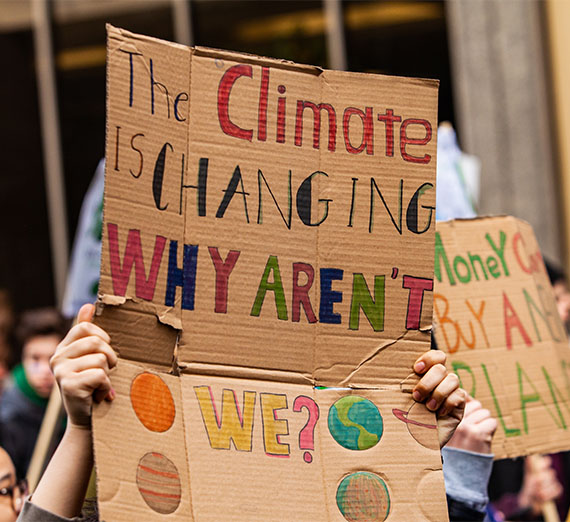From Classroom to Community: Real-World Climate Solutions

Eighteen students from six states, each with diverse professional backgrounds, united by a common interest in learning how to respond to climate change in their local communities. This group formed the inaugural cohort of the Professional Certificate in Climate Action Planning, which ran from August 30, 2023, to January 17, 2024.
This certificate, offered through a partnership between the Gonzaga Institute for Climate, Water, and the Environment and GU’s Center for Lifelong Learning, teaches individuals how to create actionable plans for addressing climate change through mitigation and adaptation.
“This certificate is a good idea because it is needed, and we didn’t find a lot of programs like this around the country,” said Kara Odegard, the course instructor. “There is a national demand for climate planners. Climate change is no longer a future problem; it is a current one, and we need the tools to plan for the reality of extreme weather events.”
Similar to other certificates offered through the Center for Lifelong Learning, this program holds synchronous online courses, held for one and a half hours each week over eighteen weeks.
The curriculum guides students in developing a climate action plan outline for a chosen community. They create a community engagement plan, discuss environmental justice and its relevance, learn the fundamentals of greenhouse gas emission inventories, and how to devise strategies to reduce emissions. Additionally, they research climate impacts on their specific community, compare these impacts to community assets, and learn how to build an adaptation plan.
“We have structured the program as an attempt to survey the entire breadth of climate action planning,” said Brian G. Henning, course co-instructor and director of the Climate Institute. “Students get a good sense of all the pieces of the puzzle.”
According to Ric Escobedo, a student of the inaugural cohort, the course’s structure worked well.
“The design of the program really helped with my way of learning,” said Escobedo. “Each assignment was building on creating a climate action plan. I learned the stakeholders that need to be involved in the process, the tools necessary to create a plan, and the importance of engaging underserved communities that are most affected by climate change.”
The professors emphasize environmental and climate justice within the course, helping students create a climate action plan that focuses on those most affected, least responsible, and with the fewest resources to respond to climate change.
Each student completed the course with an outline of a climate action plan tailored to their target community. The projects reflected diverse communities, including ports, a neighborhood, a ski resort, agriculture, and tribal communities, representing various regions across the United States.
One student, Laurencia Strauss, enrolled in the program to gain training related to climate adaptation planning for her work with the Miccosukee tribe in Florida. Leveraging her background as an artist and landscape architect, she created a human-centric approach to climate planning, illustrating the relationships between vulnerabilities, adaptation strategies, and mitigation using diagrams.
“I used diagrams because I am a visual thinker,” said Strauss. “The professors appreciated the diverse backgrounds that students brought to the program. They allowed me to integrate my background in art and landscape architecture with climate planning. They really understood that this was a multidisciplinary practice and each of our skillsets had value.”
Escobedo enrolled in the course to learn about fire adaptation and prevention to help his community in Leavenworth, Wash.
“I live in central Washington which is considered one of the highest-risk areas for wildfires in the entire state of Washington. I became involved in my community and used this course to educate myself on fire prevention and what I could do to help the environment,” said Escobedo.
Both students have applied their final projects and newly gained knowledge within their communities. Strauss was hired by the Miccosukee tribe to help build capacity around climate resilience and is currently developing a climate action plan for one of their departments. Escobedo serves on the board of the Wenatchee River Institute, where he developed a climate action plan and engaged the community in fire-wise activities, including education and resource allocation. In the future, he plans to work with the executive director on conservation practices and reducing greenhouse gas emissions.
Looking ahead, as this certificate program continues, Odegard will continue to teach future cohorts. With experience in climate planning for municipalities, tribes, and businesses, she brings the expertise and connections to guide students in creating effective climate action plans that achieve their local communities’ climate goals amid the growing climate crisis.
